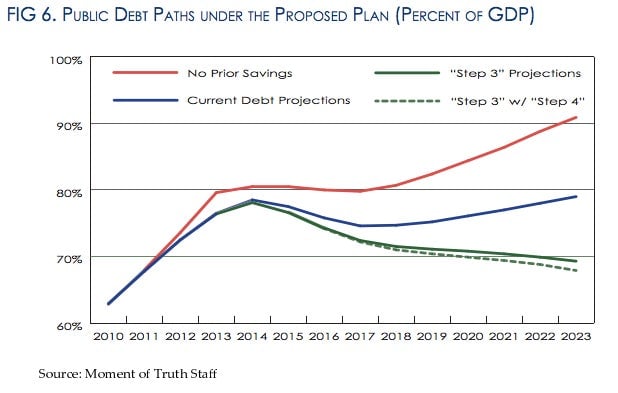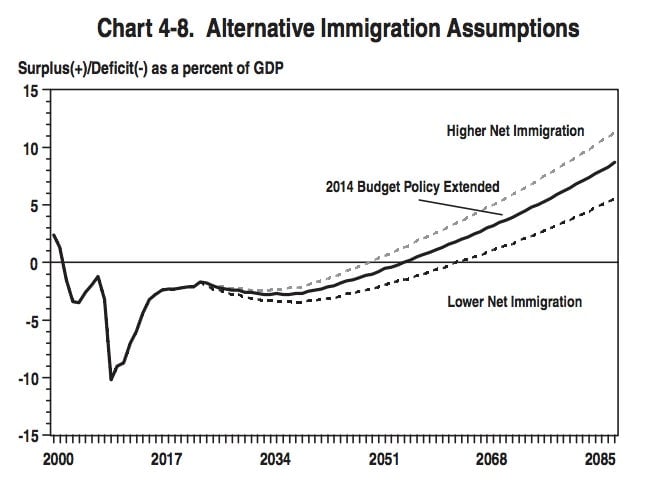Letting more immigrants into the US will also bring down the country’s debt
You probably missed it with the madness in Boston, but US budget worriers-in-chief Erskine Bowles and Alan Simpson released a new plan (pdf) to reduce US debt that they hope will be the foundation of a grand bargain in Congress.



You probably missed it with the madness in Boston, but US budget worriers-in-chief Erskine Bowles and Alan Simpson released a new plan (pdf) to reduce US debt that they hope will be the foundation of a grand bargain in Congress.
It’s not just last week’s dramatic news that has drawn attention away from Simpson and Bowles, two influential former government officials who headed up a debt reduction commission in 2010, but the fact that their last three years of advocacy have actually served to make the debt problem somewhat less scary. In the graph of debt-to-GDP above, you can see the red line of debt doom—representing what would have happened had policy not changed since 2010—shift to the blue line of debt stabilization, the projected result of current policy. The two former officials would like to see the US move onto the green path they outline, toward more long-term debt reduction.
But with the debt now not due to start growing again for the next five years—and with so much uncertainty about how big deficits will be—the US Congress is more focused on other debates. Gun safety and, more feasibly, immigration reform seem more immediate and worthwhile than bridging a perhaps insurmountable gap between Democrats and Republicans on budget issues. That doesn’t mean, however, that working on border reform is putting off fiscal adjustment.
The White House Office of Management and Budget (OMB) shares the assumptions that underly its economic forecasts, and one of them is the number of new immigrants entering the country, estimated at about one million each year. More immigrants means a growing workforce that pays more taxes and creates more jobs, relieving some of the financing burdens that come with America’s aging population. Here’s a chart showing how 300,000 more or 200,000 less immigrants affects the budget deficit:

The OMB estimates (pdf, p. 56) that increasing immigration by 300,000 people a year, to 1.3 million, would be the equivalent of 0.6% of GDP in deficit reduction, or about $100 billion, each year between 2014 and 2088. Sounds like plan to tackle the debt to me.
While we don’t know exactly how many new immigrants would enter the United States if the new immigration reform is passed, it would likely be more than the current rate, thanks to the removal of caps on certain potential migrants, a more streamlined process, and new attempts to attract wealthy and highly-skilled immigrants to the US—not to mention expanded plans for temporary workers here. That will likely improve the United States’ fiscal health. And all, hopefully, without endless jawing over taxes and spending.